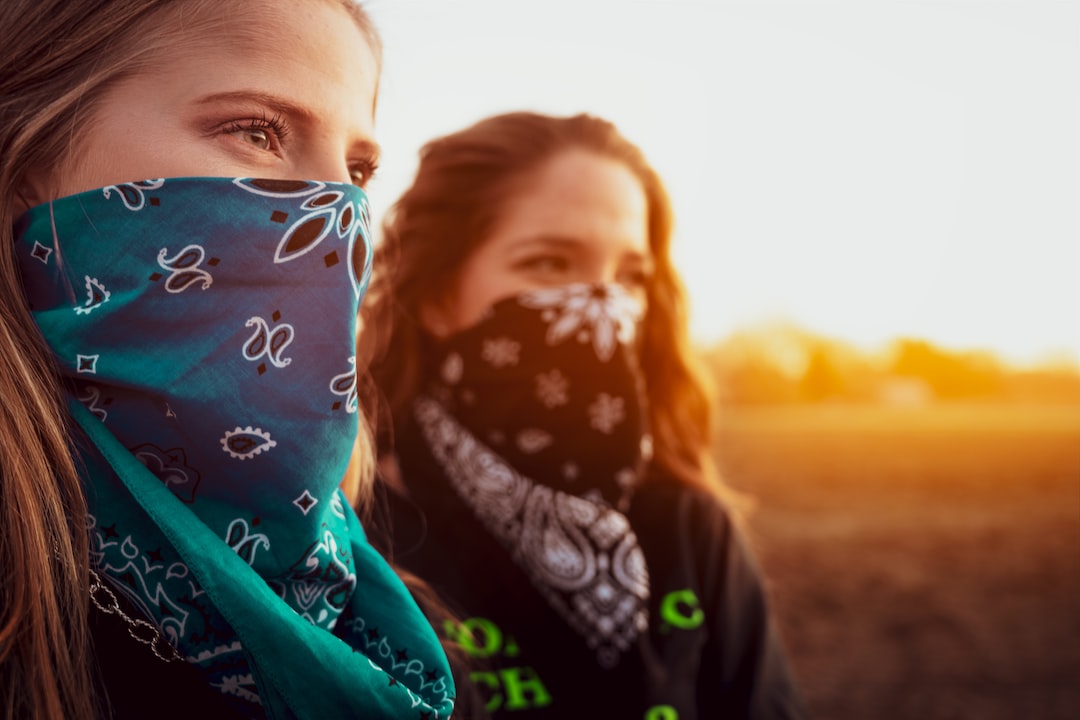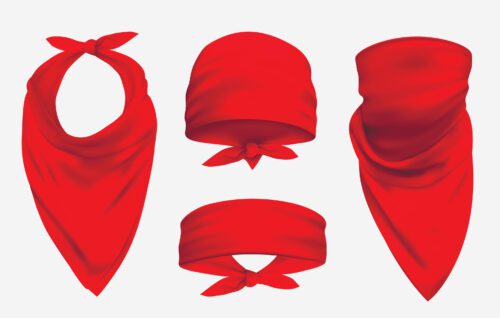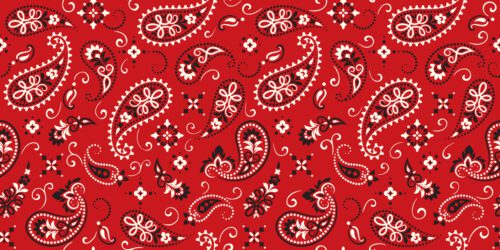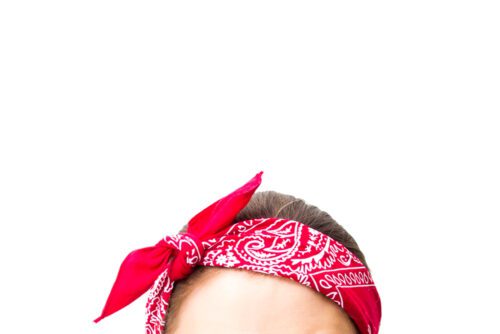
Ah, the bandana! This classic accessory has been around for centuries and is still a go-to fashion item today. Whether you’re looking to add some color to your wardrobe or want an easy way to spruce up any outfit, there are so many ways you can wear a bandana that will make it look like it was made just for you. From its interesting history and different types of bandanas available, all the way through how to style them in various looks as well as sewing with them – even if you’ve never touched a needle before – we have everything covered in this blog post about our favorite accessory: The Bandana!
Table of Contents:
- History of the Bandana
- Different Types of Bandanas
- How to Wear a Bandana in Different Styles
- Sewing with Bandanas for Beginners and Advanced Sewists
- Caring for Your Bandana
- FAQs in Relation to Bandana
- Conclusion
History of the Bandana
The bandana is a timeless fashion accessory that has been around for centuries. Its origins can be traced back to India, where it was used as a head covering and worn by both men and women. The earliest known use of the bandana dates back to the 16th century when they were popular among traders in the Middle East.
Origins
The term “bandana” comes from an Indian word meaning “to tie” or “to bind”. In India, these colorful cloths were often used as turbans or headscarves, but also served many other purposes such as wiping sweat from one's face or carrying items like spices and jewelry. They eventually made their way to Europe during the 17th century via trade routes with Asia and Africa, becoming increasingly popular in countries like France and England.
Early Uses
In Europe, bandanas became fashionable accessories for wealthy people who could afford them. Women would wear them on their heads while men would tie them around their necks as cravats or pocket squares. By the 18th century, they had become commonplace among all classes of society due to mass production techniques which allowed more people access to this stylish item at an affordable price point.
Evolution of the Bandana
As time went on, different cultures began using bandanas in various ways such as neckerchiefs for cowboys in America or paisley-patterned ones favored by British rockers during the 1960s music scene. Today they are still widely used across many industries including construction workers who wear them over their faces for protection against dust particles, athletes who use them during workouts, and fashionistas who incorporate them into outfits for style. It is clear that this versatile piece of fabric has stood the test of time.


Different Types of Bandanas
Bandanas are a classic accessory that can be used in a variety of ways. From headbands to neck scarves, there is no shortage of creative ways to wear them. But before you choose the perfect bandana for your project or style, it’s important to understand the different types available.
Cotton Bandanas: Cotton bandanas are lightweight and breathable, making them ideal for everyday use. They come in a range of colors and patterns, from classic red paisley prints to bold geometric designs. Cotton bandanas are also easy to care for – just machine wash on cold with like colors and tumble dry low.
Silk Bandanas: Silk bandanas offer an elegant look that is perfect for special occasions or formal events. These luxurious pieces come in many beautiful colors and styles, including traditional paisley prints as well as modern abstract designs. To keep silk looking its best, hand wash with mild detergent and hang dry away from direct sunlight or heat sources.
Printed Bandanas: Printed bandanas add a fun touch to any outfit. Choose from an array of colorful prints such as floral motifs, animal print designs, tie-dye patterns or even cartoon characters. Printed bandana fabrics vary depending on the design but most can be machine washed on cold with like colors and tumbled dry low without fading or shrinking over time.
No matter which type you choose – cotton, silk or printed – you'll find endless possibilities when it comes to styling your favorite piece. With so many options available today it's easy to create unique looks that will make heads turn wherever you go.


How to Wear a Bandana in Different Styles
Bandanas are a timeless accessory that can add a unique touch to any outfit. Whether you’re looking for something casual or dressy, there are plenty of ways to wear them. Here are some tips on how to style your bandana in different ways:
Headband Style: Wearing a bandana as a headband is an easy way to keep your hair out of your face and add some color and texture to your look. To tie it like this, fold the bandana into a triangle shape and then roll it up until it’s about two inches wide. Tie the ends together at the back of your head so that they form a loop around the top of your head. This style works best with cotton or silk bandanas since they have more structure than printed ones do.
Neck Scarf Style: A neck scarf is one of the most popular ways to wear a bandana, especially during summer months when you want something lightweight around your neck but don’t want too much bulkiness from other accessories like scarves or jewelry. To achieve this look, fold the bandana into a triangle shape and then tie each end together behind your neck so that it forms an X-shape across your chest. You can also leave one side longer than the other if you prefer asymmetrical looks.
Bandanas make great hair accessories because they come in all sorts of colors and patterns which can help add some flair to any hairstyle. To use one as an accessory, simply fold it into either square or rectangle shapes depending on the look you’re going for – squares work better for more classic styles while rectangles give off a more modern vibe – then wrap them around sections of hair near either side of partings or ponytails before tying them securely at the back with bobby pins if needed.
No matter how you choose to wear yours, having fun with fashion is always encouraged when styling with bandanas. With these simple tips in mind, try experimenting with different colors and patterns until you find something that suits both your personal style and occasion perfectly.


Sewing with Bandanas for Beginners and Advanced Sewists
Bandanas are a versatile fabric that can be used to make many different projects. Whether you’re just starting out or an experienced sewist, learning how to use bandanas in your sewing projects is a great way to add some unique style and color to your wardrobe.
Simple Projects for Beginners: If you’re new to sewing with bandanas, there are plenty of simple projects that will help you get the hang of it. Try making a headband by cutting two strips from the bandana and then stitching them together at one end. You can also make a pocket square by folding the bandana into triangles and then topstitching along the edges. For something more complex, try making an infinity scarf by cutting two long strips from the fabric and joining them together at one end before hemming all around for a neat finish.
Creative Ideas for Advanced Sewists: Once you’ve mastered basic techniques like hemming and topstitching, why not take things up a notch? Make yourself some stylish accessories like hair ties or scrunchies using scraps of leftover material from other projects – they look great when made with patterned fabrics like paisley-print bandanas. Or if you want something more ambitious, try creating garments such as skirts or dresses using multiple pieces of fabric cut into shapes which fit together perfectly when sewn up correctly – this technique looks especially impressive when done with brightly colored prints.
To ensure your creations last longer than just one season, it is important to care for your materials properly. Most cotton bandanas should be washed on cold settings in order to preserve their colors; however, silk ones may require dry cleaning instead so check labels carefully before laundering any items made from these fabrics. When storing away unused pieces of material always keep them folded neatly rather than crumpled up as this will help prevent creasing or fading over time.
Caring for Your Bandana
Caring for your bandana is essential to keeping it looking great and lasting longer. Different fabrics require different washing methods, so it’s important to know which type of fabric you have before getting started. Cotton bandanas are the most common and can be machine washed in cold water on a gentle cycle with like colors. Silk bandanas should always be hand-washed in cool water using a mild detergent or shampoo specifically designed for silk garments. Printed bandanas may fade over time if not cared for properly, so they should only be spot cleaned when necessary and never machine washed.
When storing your bandana, make sure that it is completely dry before folding or rolling it up and placing it into storage. It’s best to store them away from direct sunlight as this can cause fading over time. If you want to keep your printed designs vibrant, consider hanging them up instead of folding them away in drawers or boxes where the design may become distorted over time due to pressure from other items being stored nearby.
For those who love wearing their favorite pieces often but worry about wear and tear, try investing in multiple copies of the same style. This way you can switch out one piece when needed without having to worry about damaging any single item too much over time – plus you get more opportunities to show off your unique style.
No matter how often you choose to wear yours, caring for your bandana will help ensure that each piece looks its best every time you put it on. Investing in multiple copies of the same style is a great way to switch out one piece when needed without having to worry about damaging any single item too much over time, and also gives you more opportunities to show off your unique style.


FAQs in Relation to Bandana
What is bandana used for?
They can be worn as a headscarf, neckerchief, or even tied around the wrist as an accessory. Bandanas can also be used to tie back hair and keep it out of your face while working or playing sports. Additionally, bandanas are often used in crafting projects such as quilting and sewing projects to add color and texture to the finished product. Finally, they make great pocket squares when folded into triangles and tucked into suit pockets for formal occasions. Bandanas are a great way to add color and texture to any look.
What culture is bandana?
Bandana is a traditional style of clothing and accessory that has been around for centuries. It is most commonly associated with the American West, where it was used by cowboys and other working people to protect their heads from the sun or wind. Today, bandanas are worn as fashion accessories in many cultures around the world, often featuring bright colors and patterns. They can be tied in different ways to create unique looks, making them versatile pieces of clothing for any wardrobe.
What's bandana?
A bandana is a large, usually brightly colored square of fabric that can be worn as a headscarf, neckerchief, or tied around the wrist. It is typically made from cotton and often features printed designs. Bandanas are popularly used for fashion purposes but also have practical uses such as protecting the face from dust or sunburns. They can also be used to tie back hair or create makeshift bags when folded into triangles. Bandanas are a versatile and timeless accessory that can be worn in many different ways.
Conclusion
In conclusion, the bandana is a timeless accessory that has been around for centuries and continues to be popular today. It can be used in many different ways, from tying it around your neck to sewing with it. Whether you are a beginner or an advanced sewist, there are plenty of creative projects you can make with bandanas. Just remember to take proper care of them so they last longer!
Are you looking for the perfect way to customize your wardrobe with a fashionable bandana? Look no further than So Sew Easy! Our patterns and sewing content make it easy for beginner to advanced sewists alike to create beautiful, stylish bandanas. With our step-by-step instructions and helpful tips from experienced sewers, you'll be able to craft custom accessories that reflect your own unique style. Let us help you find creative solutions today – join us at So Sew Easy!








I’ve wanted to make some bandanas (larger ones for my tall husband). But, I cannot find the right fabric. All cotton is at most shops but it does not seem to have the strength of the fabric used in bandanas. Do you have a source?
Hi Linda, 100% cotton should be strong enough for a bandana; however, the source of the cotton and the weave is essential; Japanese and Swiss cotton is today the best.